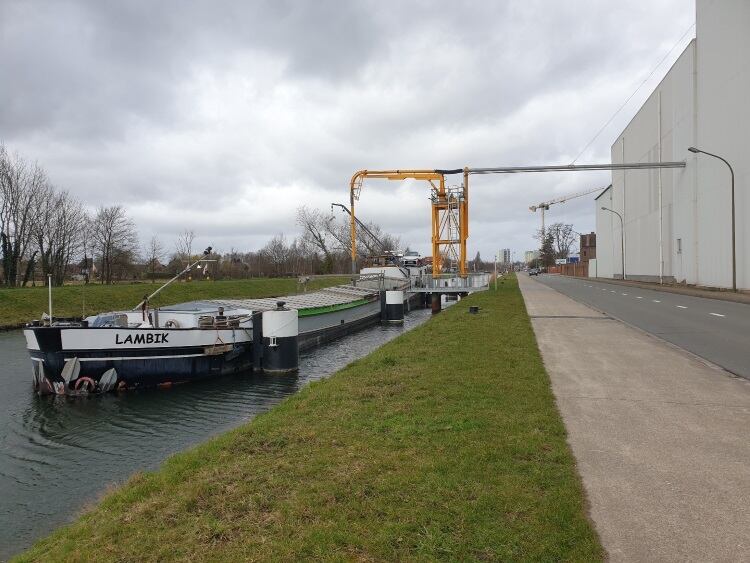Beneo has invested €500,000 in waterway transport to reduce its reliance on trucks on the road.
The project will enable the company transport two-thirds of its cargo by barge each year, meaning it will reduce carbon emissions associated with the inbound transport of rice from the harbour to the plant by 20% annually.
Going back to go forward
Beneo’s Wijgmaal plant is the source for more than half of the world’s rice starch. The plant has a heritage in waterway transport that stretches back to 1856, when barges were first used to transfer Asian imported rice from the Belgian ports to the factory.
Road vehicles have taken over as the main mode of transport, however, Beneo has recognised that barge transport is a more sustainable logistics platform.
The unloading capacity at the company’s rice starch has been increased, meaning the docking station can now accept two barges. Prior to the upgrade, one-third of the rice processed by the Wijgmaal plant was transported by one barge completing 45 cycles per year. The remaining freight was making the 320km journey by road.
A new unloading system can shift more than double the volume of rice per hour than before, considerably shortening cycle time.
“It used to take three days to unload a barge, whereas now it can be done in 16 hours,” said Roland Vanhoegaerden, operations managing director, Speciality Rice Ingredients at Beneo.
“This has allowed us to charter a second barge. Consequently, two-thirds of the rice used by the facility is now received by barge and just one-third by truck.”
Road transport emits on average 115g of CO2 per tonne-km, whereas barge transport generates just 50g of CO2 per tonne-km. By doubling the volumes transported over water, Beneo will halve the number of truck movements to and from Wijgmaal each year.
“At Beneo, we are always looking to improve our environmental performance. We are deeply committed to caring for people and planet in whatever ways we can, whether through raw material valorisation or driving ongoing reductions in energy and water consumption as well as CO2 emissions,” added Vanhoegaerden.
“Our inland waterways transportation expansion programme feeds into this and demonstrates how sustainability and efficiency goals can be mutually compatible.”
Coping with growing demand
The upgrade dovetails with production expansion plans for the Wijgmaal plant. Beneo is ploughing €50m to double capacity by March 2022 in order to match growing rice starch demand driven by the natural and clean label trends. This is not slowing down, and the company predicts volumes to reach a level within the next 3-4 years to necessitate a third barge.
“To ensure supply security, we want to maintain a multi-modal logistics model rather than relying solely on a single mode of transportation, but our aim is to increase water transportation in the mix in as far as we can.
“Barge might be one of the oldest ways of transporting freight inland, but it is one of the most reliable, cost-effective and sustainable.”



